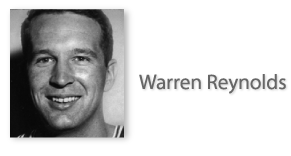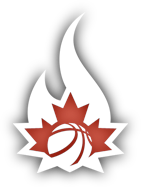 Decades before Own the Podium prepared amateur athletes for Olympic success, a young basketball player named Warren Reynolds had a problem.
Decades before Own the Podium prepared amateur athletes for Olympic success, a young basketball player named Warren Reynolds had a problem.
Reynolds and his teammates on the national champion Senior “A” Toronto Dow Kings wanted a shot at playing in the 1964 Summer Olympics in Tokyo, Japan. But the Canadian Amateur Basketball Association—the precursor to Basketball Canada—wasn’t eager to send a squad to the pre-Olympic tournament in Yokohama.
The players persisted, and after several weeks of negotiations the CABA agreed they could go—if they raised the princely sum of $35,000. Several companies sponsored the young athletes, and nine players put up $1,500 each, so strong was their desire to play.
Buoyed by this support—and assurances that the players’ investment would be refunded if they made the Olympics—the team left for Yokohama in October and promptly won seven of nine games to punch their ticket to Tokyo.
“Which was extremely exciting, since we all got our $1,500 back,” Reynolds quipped. The 28–year-old Etobicoke resident had played for Canada in the 1959 Pan Am Games in Chicago and the pre-Olympic tournament in Italy four years prior, but the Tokyo Games were unlike anything he and his teammates had ever seen.
“Tokyo made Rome look like a Sunday school picnic,” Reynolds said. “This was the first huge thing Japan had done since the Second World War. It was the first massive Olympics.”
After nine games in 12 days in “tremendous heat,” the tired Canadians did not fare well in tournament play, dropping seven straight games and quickly falling out of medal contention.
Heading into the classification round, the thought in the dressing room was, “We’re not going home without a victory,” Reynolds said. The 6 foot 4 guard pulled out all the stops against Peru, scoring 25 points in an extremely tight game. He tied the score with three seconds left on the clock, sending the game to overtime.
Five minutes later, with the game in its dying seconds, Canada was down by one point. “We went flying down the floor,” Reynolds said. “I hit the top of the key, which is where I like to be.” Teammate Barry Howson fed him the ball. “I turned and shot without even looking. The buzzer went off, and the ball went in.”
The 82–81 victory was the team’s only win of the tournament. But the scorecard didn’t tell the whole story. The determined Canadians had already proven their detractors wrong by posting the best pre-Olympic record of any Canadian team before or since. “We came 14th in the world. It’s not number one, but it’s a lot better than 20th,” Reynolds said. “That was something I always tried to teach my kids: don’t be down on yourself for getting beat in the finals, because you had to get there first.”
The Winnipeg native first flashed his skill with a basketball at Lambton-Kingsway Public School in Etobicoke. At a time before public leagues, George Hull—a well-known teacher and vice principal at Etobicoke Collegiate (ECI)—started a Saturday morning league with teams from local public schools plus two ECI squads.
“George Hull loved basketball, and he was the Midget coach, so he thought that if you developed players at the public schools that would be coming to Etobicoke, he would have a better Midget team,” Reynolds explained. Coaches across the city would later copy Hull’s template.
Since their school didn’t have any baskets, Reynolds’ team ran plays over and over in the schoolyard. “Public school basketball wasn’t even heard of in those days,” said Reynolds. “I don’t think I’d have ever gone through school if it hadn’t been for George.” Another figure who put Reynolds on the right path was Dr. Wilfred Lockhart, minister at his family’s church, Lambton-Kingsway United. When Reynolds was 14, the church built an addition that included a gymnasium. Lockhart soon got used to young Warren asking him to unlock the gym so he could shoot hoops. “He got so tired of me bugging him, he finally gave me a key to the church,” Reynolds said. “Dr. Wilf Lockhart was the man who changed my life for basketball, because I had a place to go and practice.”
Reynolds lived in the gym, and all that practice paid off when the young sharpshooter went to ECI. The senior basketball team took the city championship two years running, and the busy athlete was also an all-star flying wing on two champion football teams. “High school sports back then, it was a religion,” Reynolds said. A basketball game drew 700 fans, ECI’s rickety balcony crammed three deep.
“I was always amazed come Friday night after a tripleheader that it was still standing,” Reynolds said. “The competition at that level in those days was tremendous. When we went to Runnymede Collegiate, it was like a war. It wasn’t a basketball game—it was proof of your manhood.” Reynolds’ parents, Alfred and Bessie, were always in his corner.
“My father spent six years doing nothing but driving me somewhere to play something,” he said fondly. “They never missed a game that they could get to.” In 1956–57, Reynolds played basketball with the Junior A Nortown Motor 88s in a national league with teams from Victoria to Moncton. The 88s won the finals in Winnipeg, with the Reynolds family and Dr. Lockhart, who had since become the first president of the University of Winnipeg, cheering from the stands. “(Lockhart) sat with my aunts—all six of them. They drove him crazy,” Reynolds smiled.
When he turned 20, Reynolds was recruited to play for the Senior A Tillsonburg Livingstons. Canada did not have a national basketball program at that time, so in an Olympic year, the national champion seniors became the Olympic team. Livvies owner Gerry Livingston—a wealthy industrialist and devout Catholic—had his sights on a berth at the 1960 Games in Rome, and an audience with the pope. Livingston scouted players from across the country, and Reynolds found himself playing basketball in tobacco country.
The Livvies took the title and packed their bags for the pre-Olympic qualifying tournament in Bologna. They finished outside the final 16, but spent a memorable time in the Olympic Village. After one last season in Tillsonburg, Reynolds moved back to Toronto to start his career. He married and had the first of two children, settling into life away from basketball. But when playercoach Ruby Richman approached him to try for Tokyo in 1964, Reynolds took to the court once again. “When you spend your life saying I really want to play in the Olympics, and you actually get a chance to do it, it’s quite exciting,” he explained. Reynolds was inducted into the Canadian Basketball Hall of Fame in 2001.
Reaching the pinnacle of success in one sport is impressive enough. But after retiring from basketball at the ripe old age of 28, Reynolds tried his hand at another fast-paced game: squash. Toronto was becoming known as the “squash capital of the world,” and he was curious to try an individual sport for a change. His good friend Bob Wharton, a major Etobicoke developer, installed a squash court beside a TD Bank he built at Dixie and Eglinton, and the pair formed the Dixie Squash Club, which remains active over four decades later. The naturally competitive Reynolds progressed steadily and became 45 and over national squash champion in 1982.
He mentored young athletes through the club’s junior squash program and basketball clinics at local schools. Today, he works with a high school basketball team in his home of Surrey, BC.
The Olympian sends the aspiring athletes a simple message: “It’s not the time you put in with other people, it’s the time you put in by yourself that makes you better.”

